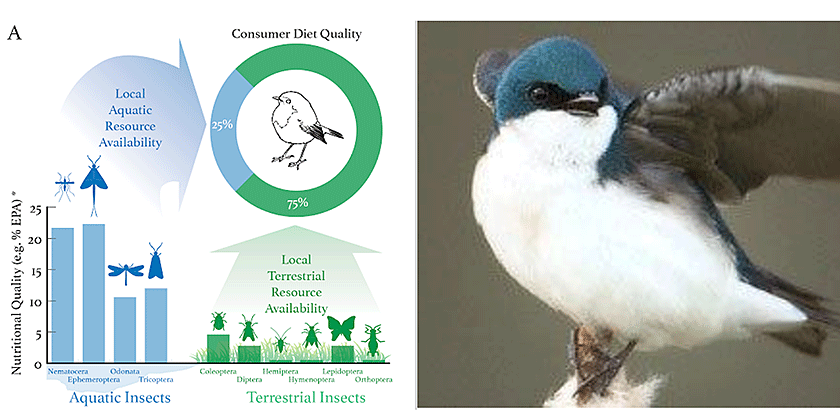Department Fish Ecology and Evolution
Predator coupling of aquatic and terrestrial ecosystems: the importance of nutritional diversity of prey

This project contributes to the Blue Green Biodiversity Research Initiative – an Eawag-WSL collaboration focusing on Biodiversity at the interface of aquatic and terrestrial ecosystems.
Human activities often disproportionately threaten predators compared to other trophic groups, and this can influence biomass distribution along food chains, coexistence of competing species, and stability of entire food webs. Many predators forage on a wide diversity of prey species from both aquatic and terrestrial ecosystems, which vary considerably in their spatial and temporal availability (e.g. abundance, and phenology) as well as nutritional quality (e.g. fatty acids). This is particularly important because predators often lack the metabolic capacity to synthesise, for example, the omega-3 long-chain polyunsaturated fatty acids (hereafter PUFAs) that are essential for growth, survival and reproduction. Aquatic ecosystems have substantially more PUFAs than terrestrial ecosystems, and the relative availability of PUFAs can have fitness consequences for consumers. In this project we ask: how does spatiotemporal variation in prey availability and quality affect predators foraging on both aquatic and terrestrial resources?




